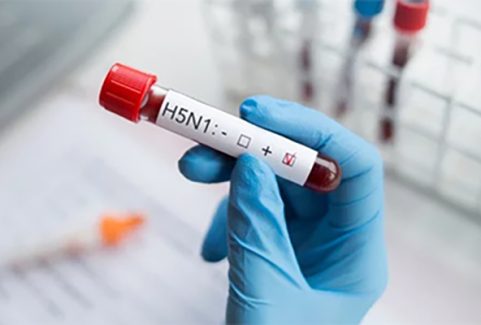Mastitis – it’s a real game changer in terms of profitability at the farm level! It can turn a good cow into a poor one very quickly! In 2013, over 20% of cows removed by involuntary culling from Canadian dairy herds left due to problems with mastitis and/or high somatic cell count. Over the past several decades since somatic cell testing became a routine service offered by milk recording agencies across the country, great progress has been realized. Although herd management is very important for maintaining low levels of somatic cell count, genetic selection should also be used to improve mastitis resistance. Effective August 2014, Canadian Dairy Network (CDN) will publish official genetic evaluations for Mastitis Resistance, which combines
both clinical and sub-clinical mastitis into a single genetic selection index.
Health Data
Following a coordinated industry effort involving CDN, milk recording agencies, breed associations, A.I. organizations and various veterinarian groups, a national system for collecting health events was implemented in 2007. Since that time, approximately 40% of all herds enrolled on milk recording are voluntarily recording the incidence of eight key diseases and reporting this data to their milk recording agency (or their DSA veterinarian in Quebec). This accumulation of data has led to the calculation of genetic evaluations for clinical mastitis.
Clinical Mastitis and Somatic Cell Count
Somatic cell count (SCC) is a measure of sub-clinical mastitis that is easy to assess by
laboratory analysis of each cow’s milk sample on test day. Due to the ease of recording this trait and its relative importance for herd and cow management, milk recording has offered somatic cell testing for decades as part of its portfolio of services. Now, with the additional collection of herd health events related to clinical mastitis, producers will have a tool to select directly for resistance to clinical mastitis as well as sub-clinical mastitis. Table 1 provides correlations among Holstein sire proofs for the various traits related to mastitis that CDN will be evaluating in the Holstein, Ayrshire and Jersey breeds.

Mastitis Resistance is an overall index that equally combines evaluations for three other traits, namely Clinical Mastitis in first lactation cows, Clinical Mastitis for cows in later lactations and Somatic Cell Score evaluated across the first three lactations. The heritability of Mastitis Resistance is estimated at 12%, indicating that genetic selection is possible. Official sire proofs for Mastitis Resistance have a desirable correlation of 79% with current proofs for Somatic Cell Score as well as correlations of 85% and 90% respectively, for clinical mastitis in first versus later lactations. Of particular interest as well is the fact that Somatic Cell Score, as a measure of sub-clinical mastitis, has only a moderate desirable association with clinical mastitis in first and later lactations (44% and 58% respectively).
Figure 1 provides a visual representation of the association between sire proofs for Somatic Cell Score and the new Mastitis Resistance index, expressed as Relative Breeding Values with an average of 100 and 95% of bulls ranging between 115 (best) to 85 (worst). As suggested by the strong desirable correlation of 79%, the plot shows that many bulls already known to be good for low somatic cell counts in their daughters are also good for overall selection of Mastitis Resistance, including clinical mastitis. In fact, of those bulls that were at least one standard deviation better than average for Somatic Cell Score (i.e.: rating of 2.77 or lower), 98% of them are above breed average for Mastitis Resistance. Among those that were simply better than breed average for Somatic Cell Score (i.e.: below 3.00), 78% have a rating higher than the breed average of 100 for Mastitis Resistance. In other words, these bulls were better than average for Somatic Cell Score but below average for Mastitis Resistance. The availability of the new Mastitis Resistance evaluations allows for the improvement of both sub-clinical and clinical mastitis simultaneously.
Interpretation of Mastitis Resistance
To assist producers in understanding the expected response achievable in their herd when considering sire proofs for Mastitis Resistance, Table 2 provides a “translation” in terms of average daughter performance for both clinical mastitis and somatic cell count throughout the first three lactations.
When used in a typical herd with average herd management, an average bull with a rating of 100 for Mastitis Resistance is expected to produce daughters that will have somatic cell counts averaging 178,000, 226,000 and 292,000 in each of the first three lactations, respectively. In addition, 92% of the daughters in first lactation are not expected to have clinical mastitis and this percentage decreases slightly to 88% for later lactations. Bulls that are better than breed average receive a Mastitis Resistance evaluation higher than 100 and are expected to produce daughters that are less susceptible to having both sub-clinical and clinical mastitis, as shown in Table 2.
Summary
The August 2014 arrival of official genetic evaluations for Mastitis Resistance for the Holstein, Ayrshire and Jersey breeds provides dairy producers with an advanced tool for genetic selection against mastitis, simultaneously for both sub-clinical and clinical. Due to the larger number of progeny proven sires with an official Mastitis Resistance, the Holstein breed will also benefit from the calculation by CDN of genomic evaluations for this important trait. The publication of Mastitis Resistance will not replace the availability of genetic evaluations for Somatic Cell Score but dairy producers should move towards using this new index when making selection decisions to reduce the overall incidence of mastitis in their herd.
Authors: Brian Van Doormaal and Lynsay Beavers Date: June 2014






